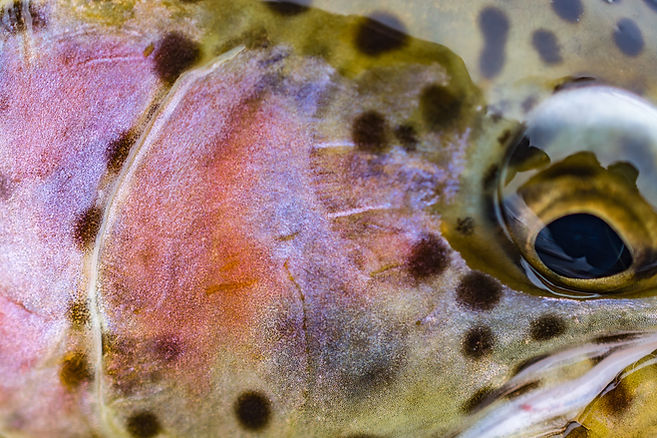State of the Upper Madison: 2024 Survey Report Summary
- edgeoutfitting
- Apr 11
- 3 min read

It’s been another eventful year on the Madison River, and we’ve got the highlights. Thanks to ongoing monitoring by Montana Fish, Wildlife & Parks (FWP) and Northwestern Energy (NWE), we have a clear and long term picture of how the river’s fish, habitat, and water quality are doing and what’s ahead.
Let’s dive into the 2024 Madison River update.
First, the lakes.
In Hebgen Reservoir, trout numbers are holding up well. This spring’s gillnet surveys showed an average of 21 trout per net, just slightly down from 23 last year. Brown Trout continue to thrive with an average size of 18.3 inches, well above management goals. Rainbow Trout were a bit smaller at 16.8 inches, and their numbers were lower than management goals, but not terribly so.
Over in Ennis Reservoir, things are trending in the right direction. The average catch increased from 13 to 18 trout per net, with Brown Trout averaging 16.5 inches. Rainbow Trout lagged just slightly below the long-term size average, coming in around 14.6 inches.

Upper Madison Sites.
FWP tracks trout populations in three long term monitoring sections of the Madison River: Pine Butte, Varney, and Norris. These surveys focus on fish over 10 inches long, the size anglers and biologists alike care most about.

This year, Pine Butte saw a considerable jump after a 5 year decline. And recruitment here too looks nice for subsequent years, with nearly doubling populations of trout 6 inches or greater.
Varney looked solid, too, hanging with the 3 year average. Recruitment here looks stable for Brown Trout and on the rise for Rainbows in the 6" or greater category.
The Norris Reach, however, saw its lowest trout numbers in nearly two decades continuing a downward spiral for this site. Rainbow Trout recruitment fell off a cliff and Brown Trout too, to a lesser degree. FWP believes water temperature, quality, quantity and habitat quality are all contributing to the downward trends. FWP is planning a major enhancement project here for fall 2025.


Native Fish Conservation Work
The work to restore native fish species continued in 2024, especially for Arctic Grayling and Westslope Cutthroat Trout (WCT). In the South Fork Madison, FWP stocked 218,000 Arctic Grayling embryos. While that’s under the 500,000 goal, it’s still a strong effort — and new techniques like remote site incubators are being tested to improve survival.
WCT conservation saw a big win in Ruby Creek, which now hosts a stable population of 2,534 fish across 7.5 miles. A new fish barrier on Elk Creek protects another 8 miles of key habitat, and 96 cutthroat trout were moved into the North Fork of Spanish Creek. Nine more streams are being evaluated for future reintroduction projects.
To support spawning and young trout, FWP and NWE identified six high-priority side channels between Lyons Bridge and Varney for potential reconnection to the river. These channels offer safe nursery habitat and are vital to trout recruitment.
Meanwhile, a new island and side channel will be built in the Norris Reach in fall 2025 — part of an effort to restore habitat that’s been eroded or lost since the 1950s.
And when it comes to managing water temperatures? NWE released 31 pulse flows last summer to cool the river when air temps spiked. On July 23, Sloan Station recorded 79.8°F, just below the danger zone for fish. These timely flows likely prevented a fish kill and demonstrate how coordinated management can really make a difference.
FWP is already looking ahead to 2026, when they’ll gather public input on upcoming trout restoration projects. In the meantime, they’ll continue monitoring fish populations, enhancing habitat, and helping native species bounce back.
Whether you're an angler, landowner, or just someone who loves the river, one thing is clear: the Madison continues to be a vital and resilient ecosystem — and one worth protecting for generations to come.
Stay tuned for more updates, and be sure to get involved when public feedback opportunities arise. This river belongs to all of us.





Comments